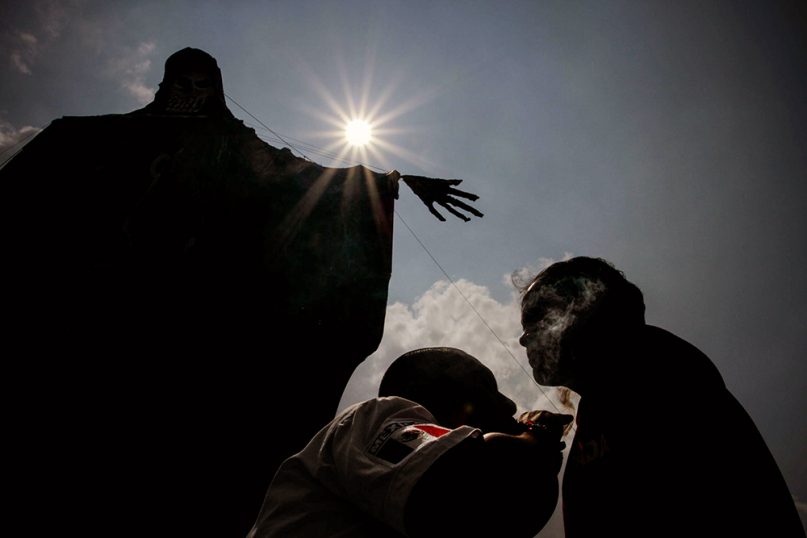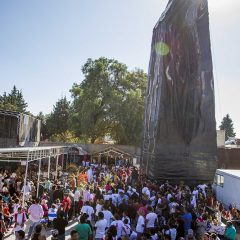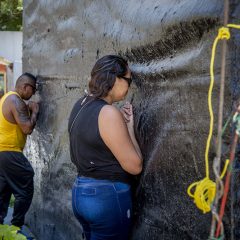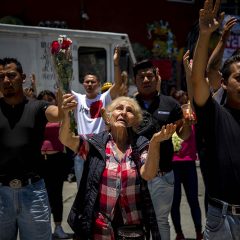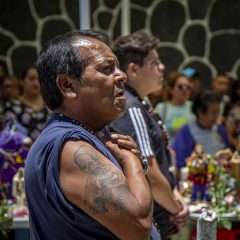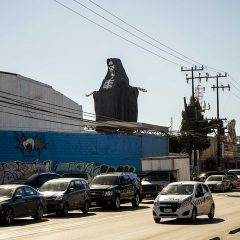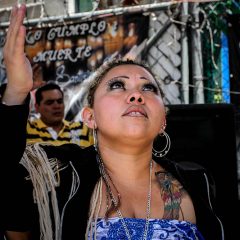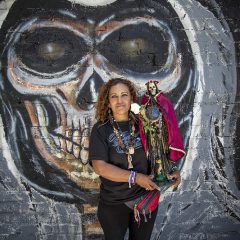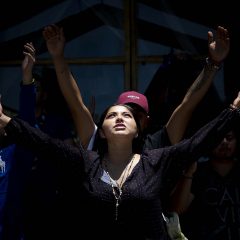- Santa Muerte iconography is now regularly seen in popular culture. Mexican culture has long revered aspects of death, but Santa Muerte has only been seen regularly for roughly 20 years. RNS photo by Jair Cabrera Torres
- The Temple of Santa Muerte International near Mexico City draws large crowds with it’s 70-foot Santa Muerte statue. RNS photo by Jair Cabrera Torres
The cult to Santa Muerte has been gaining more devotees every year in Mexico and has expanded to the United States and areas of Central America. A blend of Roman Catholic and indigenous influences, Santa Muerte is a female folk saint that goes by many names, including la Niña Blanca, la Hermana Blanca, la Niña Bonita, la Dama Poderosa, and la Madrina among others. The Catholic Church condemns the cult.
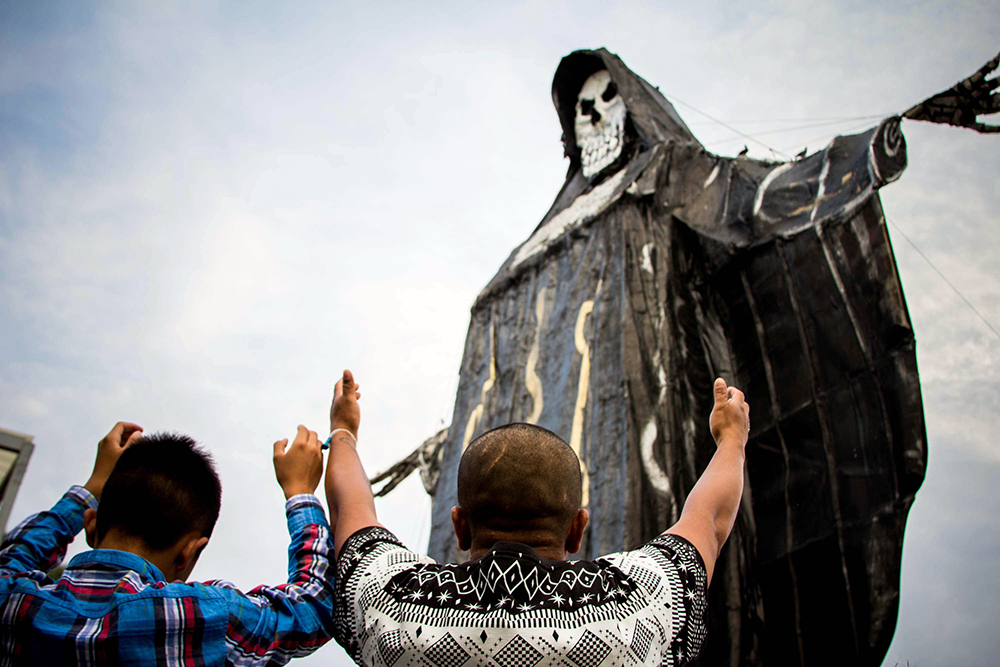
Devotees worship at the world’s largest Santa Muerte statue at the Temple of Santa Muerte International near Mexico City, in June 2019. RNS photo by Jair Cabrera Torres
- People pray at the base of a 70-feet tall Santa Muerte statue at the Temple of Santa Muerte International in June 2019. RNS photo by Jair Cabrera Torres
- Devotees worship at the Temple of Santa Muerte International near Mexico City in June 2019. RNS photo by Jair Cabrera Torres
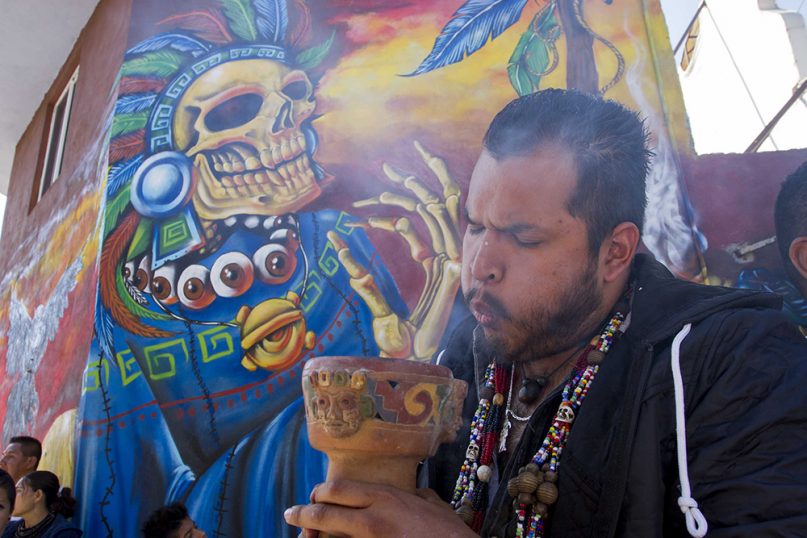
A cult follower blows on incense at the Temple of Santa Muerte International, near Mexico City. Many Santa Muerte rituals use marijuana rather than traditional incense. Although condemned by the Catholic Church, the cult continues to grow. Many Santa Muerte followers still consider themselves to be practicing Catholics. RNS photo by Jair Cabrera Torres
In this small town near Mexico City, the growth of Santa Muerte’s popularity can be traced to a single family that built the world’s largest statue to the folk saint. The Temple of Santa Muerte International was created by the Jonathan Legaria Vargas, known as “the Pantera Commander,” in the early 2000’s.
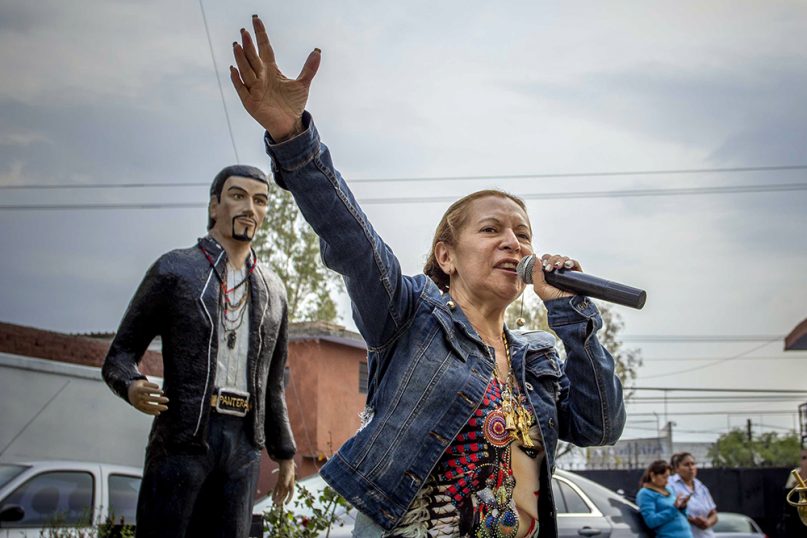
Enriqueta Vargas preaches at the Temple of Santa Muerte International in 2015. Behind her is a statue of her son, Jonathan Legaria Vargas, known to Santa Muerte followers as “el comandante pantera” or the Pantera Commander. RNS photo by Jair Cabrera Torres
- Devotees worship at the Temple of Santa Muerte International, near Mexico City, in June 2019. RNS photo by Jair Cabrera Torres
- The Temple of Santa Muerte International near Mexico City boasts the largest Santa Muerte statue in the world, at more than 70 feet tall. RNS photo by Jair Cabrera Torres
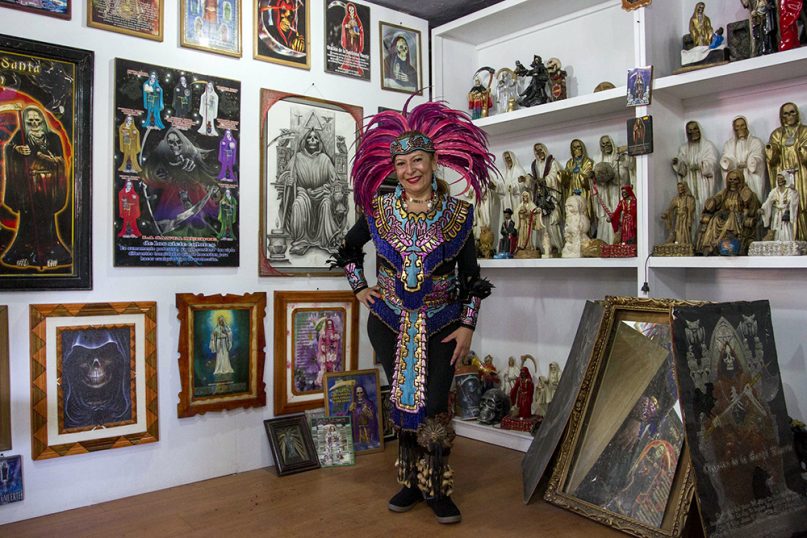
Enriqueta Vargas poses at the Temple of Santa Muerte International in 2015. Vargas died in 2018, and leadership has fallen to her daughter, Kristhel Legaria Vargas. RNS photo by Jair Cabrera Torres
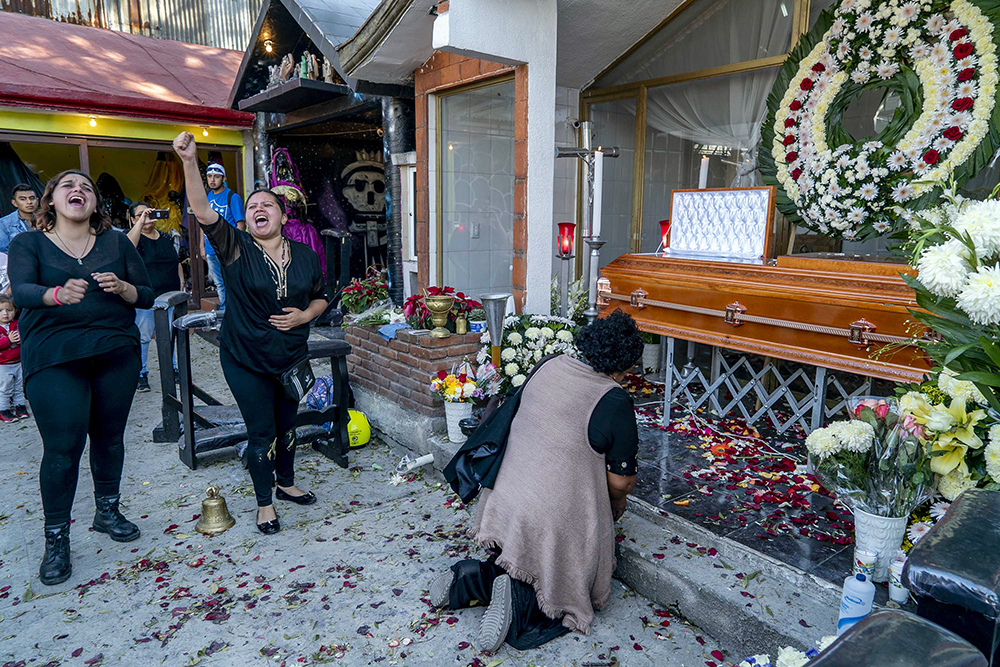
People mourn during funeral services for Enriqueta Vargas at the Temple of Santa Muerte International in Dec. 2018. Vargas died after battling cancer, leaving her daughter in charge of Santa Muerte International. RNS photo by Jair Cabrera Torres
- There are now more than 10 million estimated followers of Santa Muerte in Mexico, although the cult icon was rarely seen only 20 years ago. RNS photo by Jair Cabrera Torres
- Rosalba has been worshiping Santa Muerte for 3 years. “I believed in Christ, I was Catholic. But my personal, work, relationship and money problems led me to look for other alternatives and that is why I came to the temple to ask Santa Muerte for help.” Rosalba brought a statuette of Holy Death, which she named “Celeste.” RNS photo by Jair Cabrera Torres
- Devotees worship at the Temple of Santa Muerte International, near Mexico City, in June 2019. RNS photo by Jair Cabrera Torres
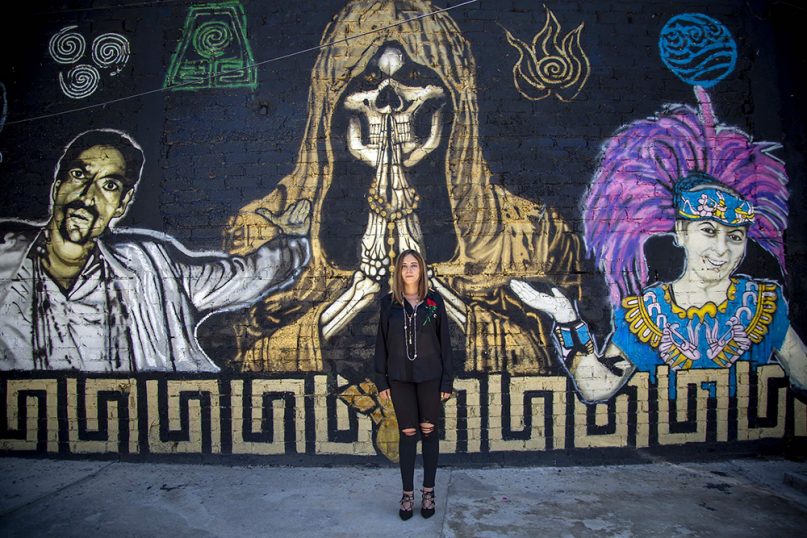
Kristhel Legaria Vargas poses in front of a mural featuring her brother and mother at the Temple of Santa Muerte International near Mexico City in June 2019. RNS photo by Jair Cabrera Torres
